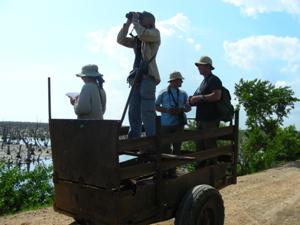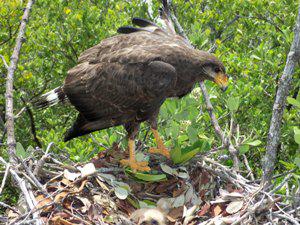Yarelys Ferrer Sánchez
Other projects
19 Aug 2013
Status and Conservation Strategy of Diurnal Raptors of a Wetland in Cuba. Phase II
17 Feb 2015
Status and Conservation Strategy of Diurnal Raptors of a Wetland in Cuba. Phase III
Aims are to determine the distribution and status of Cuban raptors inside the “Gran Humedal del Norte de Ciego de Avila” wetland; to develop an educative program in communities and protected areas and to implement a long-term monitoring of raptors.

Cuba has 21 diurnal raptor species with several threatened categories (BirdLife, 2008), as consequence of habitat’s degradation and loss. The poultry consume by some raptors has caused a rural community predisposition and a wrong image of raptors. Besides that, there is not knowledge about species importance in the ecosystems. An example is the “Gran Humedal del Norte de Ciego de Avila”, a Ramsar site and an Important Bird Area (IBA), the second largest in Cuba and the most degraded and fragmentized of all. Some protected areas exist inside it and none includes any raptors as conservation objectives in its management plans, even if the habitats are used by migratory, endemic or/and threatened species and population amount is decreasing.

This project will produce updated information on distribution, status and productivity of the Cuban raptors. We will provide new data on poorly studied areas in relation to population decreasing and potential distribution areas, measure the amount of historical distribution changes of endemic and threatened species and its current suitable areas. This information could be used for future assessments in the effectiveness of protected areas. Suitable distribution maps and lists of reproductive areas inside or/and outside of the protected areas will be generated as well, and this information will be used in the protection and vigilance programs. The ecological information altogether with the status of species will be analyzed in order to make general species-based management suggestions and implementation. It will be the baseline to implement a long-term monitoring program.
The training to the protected areas staff and the communities will be an important component for the conservation. They would implement a monitoring program of endemic, resident and migrant species developed during the term season. They will record the data on species distribution and productivity to improve management and will have enough knowledge to get more information related with species natural history and habitat selection.
Communities inside the wetland will be checked to promote the values of raptors and the need of its protection. We will initiate a raptor campaign with the community festivals that will become an annual tradition. Our proposal will achieve a change in local people conscience related to the safeguard of raptors. These actions will contribute to the conservation of whole ecosystem, taking raptors as a flag for the protection of many threatened endemic species.